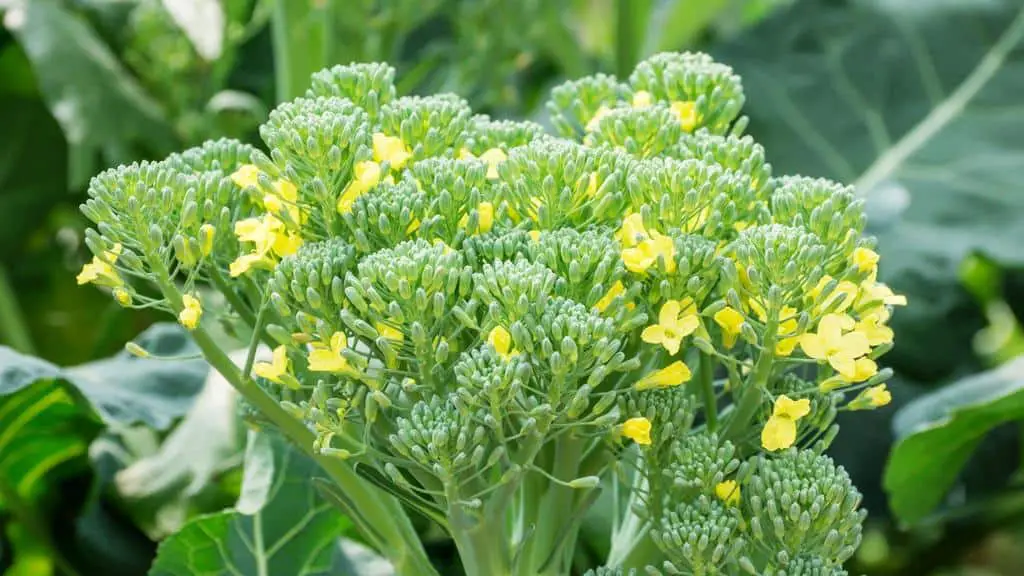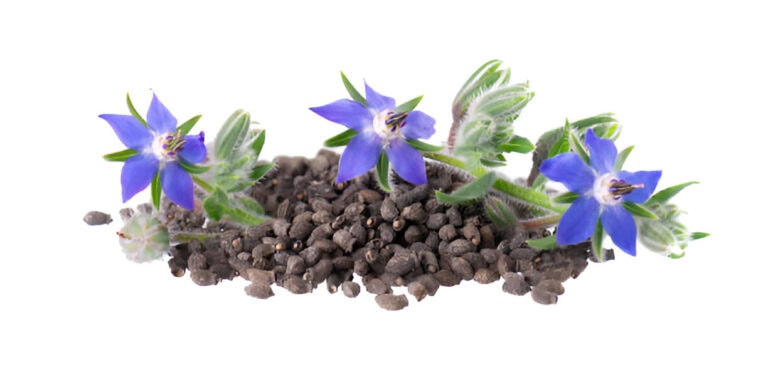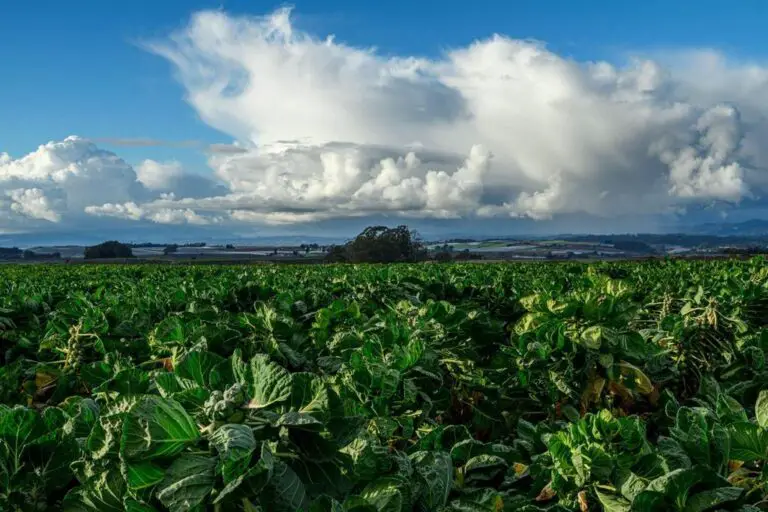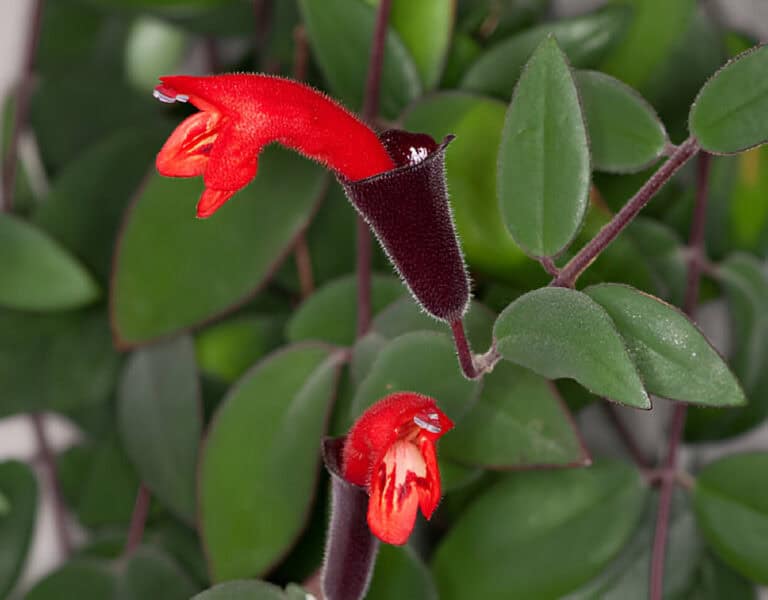How Many Broccoli Seeds Should You Plant Per Hole? Perfect Planting Guide

Growing your own vegetables is a rewarding and satisfying experience, and broccoli is definitely a superstar in the vegetable kingdom. But here’s the million-dollar question: How many broccoli seeds should you plant per hole to ensure a thriving harvest? Well, fret no more, dear gardeners, for we have the perfect planting guide to demystify this crucial step in your vegetable-growing journey.
In this comprehensive article, we’ll walk you through everything you need to know about planting broccoli seeds. From understanding the factors that influence the number of seeds per hole to the optimal spacing requirements, we’ve got you covered.
Whether you’re a seasoned green thumb or just starting out, this guide will equip you with the knowledge to maximize your yield and grow healthy, delectable broccoli in your own backyard.
So, grab your gardening gloves and let’s unravel the secrets of successful broccoli planting. Get ready to sow those seeds and watch your garden flourish with this perfect planting guide!
Factors to Consider The Number Of Broccoli Seeds to Plant
Before we delve into the ideal number of seeds to plant per hole, it’s important to consider a few factors that can influence your decision. These factors include the variety of broccoli, the spacing requirements, and the conditions in your garden.
1. Variety of Broccoli
There are several different varieties of broccoli available, each with its unique characteristics. Some varieties produce larger heads, while others have smaller florets. The size of the broccoli heads can affect the number of seeds you should plant per hole. It’s important to research the specific variety you are planting to understand its growth habits and recommended planting density.
2. Spacing Requirements
Broccoli plants require adequate spacing to grow and thrive. Crowding the plants can lead to stunted growth, poor air circulation, and increased susceptibility to diseases. It’s crucial to follow the recommended spacing guidelines provided by seed suppliers or gardening resources. These guidelines typically mention the distance required between each plant and the spacing between rows.
3. Garden Conditions
The conditions in your garden, such as the quality of the soil, sunlight exposure, and climate, can also influence the number of Broccoli seeds to plant per hole. If your soil is rich in organic matter and nutrients, the plants may require less competition for resources, allowing for fewer seeds per hole.
Additionally, the amount of sunlight your garden receives and the length of your growing season may affect the size and growth rate of your broccoli plants.
How Many Broccoli Seeds Should You Plant Per Hole?
Now that we’ve considered the important factors, let’s discuss the optimal number of broccoli seeds to plant per hole. Generally, planting two to three seeds per hole is recommended for most broccoli varieties. This approach helps ensure a good germination rate and gives you the opportunity to select the healthiest and strongest seedling to grow.
By planting multiple seeds per hole, you increase the chances of having at least one successful plant in each hole. This method provides a safety net in case some of the seeds fail to germinate or if certain seedlings are weak or damaged. Once the seedlings have emerged and grown a few inches tall, you can thin out the weaker ones, leaving the healthiest ones to continue growing.
The Size of Seeds Matters
Determining the optimal number of broccoli seeds to plant per hole is a crucial step towards achieving a successful and bountiful harvest. While it may seem like a trivial detail, the size of the seeds plays a significant role in deciding the appropriate quantity to sow. By following a few simple guidelines, you can ensure that your broccoli plants thrive and produce an abundance of delicious florets.
When it comes to large-sized broccoli seeds, it is recommended to plant just one seed per hole. Large seeds generally contain a greater amount of nutrients and energy reserves, allowing them to provide ample nourishment for the emerging plant. Planting a single large seed per hole ensures that each seedling has enough space to grow without competing for resources. This method allows for optimal root development and reduces the risk of overcrowding, which can stunt the growth of individual plants.
For medium-sized broccoli seeds, the general rule of thumb is to plant two seeds per hole. These seeds are moderately sized and strike a balance between the larger and smaller varieties. Planting two seeds helps increase the chances of successful germination, especially considering that not all seeds may sprout. In case both seeds germinate, you can later thin out the weaker seedling, leaving the stronger and healthier one to flourish.
When it comes to small-sized broccoli seeds, it is advisable to plant three seeds per hole. Small seeds often have a lower germination rate compared to larger seeds. By planting multiple seeds, you increase the likelihood of achieving the desired number of successful sprouts.
While these guidelines provide a general framework for planting broccoli seeds based on size, it’s essential to consider other factors as well. The spacing between holes, the type of soil, and the prevailing weather conditions in your area can all impact the growth of your broccoli plants.
Follow the recommended spacing guidelines provided on the seed packet or consult gardening resources for specific instructions tailored to your region.
Understanding the Growth and Germination of Broccoli Seeds

Before we dive into seed quantities, let’s explore the fascinating world of broccoli seed germination. Understanding the process will give us valuable insights into how to achieve the best results.
Anatomy of a Broccoli Seed
Broccoli seeds, like other seeds, contain the embryo of the future plant. Each seed consists of a protective outer coating, an embryonic plant, and a store of nutrients. This combination ensures that Broccoli seed has everything it needs to sprout and grow into a mature plant.
Factors Influencing Germination Success
Several factors play a role in the successful germination of broccoli seeds. These include moisture, temperature, light, and soil conditions. Broccoli seeds thrive in moist soil with temperatures ranging between 60°F and 85°F (15°C and 29°C). Adequate light is also essential for germination, although direct sunlight is not necessary at this stage.
Optimal Conditions for Germination
To provide the best conditions for germination, prepare a well-draining soil bed enriched with organic matter. Ensure the soil is evenly moist but not waterlogged. Maintain a consistent temperature range, protecting the seeds from extreme heat or cold. By creating these favorable conditions, you give your broccoli seeds the best chance of sprouting and establishing healthy seedlings.
Germination Timeline
Broccoli seeds typically germinate within 5 to 10 days, but this can vary depending on environmental conditions and seed quality. During this period, the seeds absorb moisture and swell, eventually splitting open to reveal the emerging root (radicle) and shoot (plumule). As the seedling grows, the first set of true leaves appears, indicating successful germination.
Read: Why Broccoli Plant Not Growing and Producing Heads?
Thinning Broccoli Seedlings for Optimal Growth
Thinning seedlings is a vital step in the broccoli growing process that ensures each plant has enough space to develop into healthy, productive specimens. Here are the key aspects to consider:
Reasons for Thinning Seedlings
Thinning seedlings has several benefits. It helps prevent overcrowding, which can lead to stunted growth, increased vulnerability to diseases and pests, and competition for resources like water and nutrients. Thinning also allows air circulation, reducing the risk of fungal infections and promoting overall plant health.
Determining the Ideal Spacing Between Plants
To determine the ideal spacing between broccoli plants, consider the specific variety you’re growing. Different varieties have varying growth habits and space requirements. Generally, allowing 18 to 24 inches (46 to 61 cm) between plants within a row and 24 to 36 inches (61 to 91 cm) between rows is recommended for proper air circulation and healthy plant development.
Techniques for Thinning Seedlings
When thinning seedlings, choose the strongest and healthiest plants to keep while removing the excess. Gently uproot the unwanted seedlings, taking care not to disturb the surrounding plants. Thinning can be done when the seedlings are a few inches tall and have developed their first set of true leaves.
Caring for Thinned Seedlings
After thinning, provide adequate care for the remaining seedlings. Water them regularly, ensuring the soil is evenly moist. Mulching around the plants helps retain moisture and suppresses weed growth. Fertilize according to the needs of your plants, following the instructions provided by your preferred fertilizer.
Calculating Seed Quantity for Large-Scale Planting
If you’re planning a larger broccoli planting or have a larger garden, calculating the appropriate seed quantity is crucial for efficient resource management. Follow these steps to estimate the required seed quantity:
Determining the Planting Area
Measure the total area where you plan to plant broccoli. This could be the size of a raised bed, a specific section of your garden, or the number of containers you intend to use.
Calculating the Number of Holes or Rows
Based on the desired spacing between plants, calculate the number of holes or rows you’ll have in your planting area. This depends on the spacing requirements we discussed earlier.
Estimating the Required Seed Quantity
To estimate the required seed quantity, refer to the recommended number of seeds per hole. Multiply this by the total number of holes or rows you calculated in the previous step. This will give you a rough estimate of the seed quantity needed for your large-scale planting.
Accounting for Potential Losses and Extras
To account for potential losses and extras, it’s wise to add a margin of safety. Consider factors such as seed viability, potential damage during planting, or unexpected changes in your planting plans. Adding an extra 10% to 20% to your estimated seed quantity can help compensate for these contingencies.
Common Mistakes to Avoid When Planting Broccoli Seeds
While planting broccoli seeds is an exciting endeavor, there are some common mistakes to be aware of and avoid:
1. Overcrowding Seedlings
Planting too many broccoli seeds in a small space can lead to overcrowding, which is a common mistake that can hinder the growth and development of your plants. When seedlings are crowded together, they compete for vital resources like sunlight, water, and nutrients. This competition can result in weaker plants, smaller heads, and a higher susceptibility to pests and diseases.
Additionally, overcrowding restricts air circulation around the plants, creating a damp environment that promotes fungal infections. To avoid overcrowding, follow the recommended spacing guidelines for broccoli plants. Providing enough space between seedlings allows each plant to receive adequate resources and grow to its full potential.
Read: Broccoli Seedlings Leggy
2. Underestimating Germination Rates
Another mistake to avoid is underestimating the germination rates of broccoli seeds. Germination rate refers to the percentage of seeds that successfully sprout and develop into seedlings.
It’s crucial to consider the germination rate when determining the number of seeds to plant. If you underestimate the germination rate, you may end up with fewer seedlings than expected, resulting in gaps in your garden or rows.
To ensure a sufficient number of healthy seedlings, it’s advisable to account for the germination rate when calculating the seed quantity needed for planting. This can be done by slightly increasing the number of seeds planted to compensate for potential lower germination rates.
3. Neglecting Proper Thinning Techniques
Thinning seedlings is a critical step in the growth process of broccoli plants, yet it is often overlooked or neglected. Thinning involves removing excess seedlings to provide adequate space for the remaining plants to thrive. If seedlings are not thinned properly, overcrowding issues can persist, leading to weak and underdeveloped plants.
Thinning allows the remaining seedlings to receive ample sunlight, nutrients, and airflow, which are essential for their healthy growth. It’s important to thin the seedlings when they are a few inches tall and have developed their first set of true leaves. Select the strongest and healthiest seedlings to keep and gently uproot the unwanted ones, being careful not to disturb the surrounding plants.
4. Failing to Adjust Seed Quantity for Planting Area
One common mistake is not adjusting the seed quantity based on the size of the planting area. Planting too many seeds in a limited space can result in overcrowding, while planting too few may lead to wasted space. It’s crucial to consider the available planting area and the recommended spacing requirements for broccoli plants.
By calculating the number of holes or rows in your planting area, you can estimate the required seed quantity more accurately. Additionally, it’s wise to account for potential losses and extras by adding a margin of safety to your seed quantity. This ensures that you have enough seeds to account for any unforeseen circumstances and allows for a more successful and productive harvest.
Avoiding these common mistakes when planting broccoli seeds will set you on the path to a successful and rewarding gardening experience. By providing adequate spacing, considering germination rates, implementing proper thinning techniques, and adjusting the seed quantity based on the planting area, you can promote healthy plant growth, minimize overcrowding, and maximize your chances of a thriving broccoli harvest. Happy planting!
Conclusion
To achieve successful broccoli cultivation, it’s essential to plant an appropriate number of seeds per hole and provide adequate spacing for your plants. By following the recommended guidelines and considering factors such as variety, spacing requirements, and garden conditions, you can optimize your broccoli yield and enjoy a bountiful harvest. Remember to thin out your seedlings, maintain proper spacing, and provide the necessary care for healthy growth. With these tips in mind, you’ll be on your way to growing delicious, nutritious broccoli in your own garden. Happy planting!
FAQs
Can I plant broccoli seeds directly in the ground?
Yes, you can plant broccoli seeds directly in the ground. Broccoli is a hardy plant that can be sown outdoors once the soil temperature reaches around 50°F (10°C). Prepare the soil by removing any debris and weeds, then sow the seeds at the recommended spacing. Keep the soil consistently moist until germination occurs.
What is the average germination rate for broccoli seeds?
On average, broccoli seeds have a germination rate of about 80% to 90%. However, the germination rate can vary depending on the seed quality, environmental conditions, and storage methods. To improve germination rates, ensure you are using fresh seeds, provide optimal growing conditions such as adequate moisture and temperature, and avoid exposing the seeds to extreme heat or cold.
How long does it take for broccoli plants to mature?
Broccoli plants typically take around 60 to 100 days to reach maturity, depending on the variety you are growing. The maturity time is measured from the date of transplanting or the emergence of seedlings. Harvesting is usually done when the broccoli heads are compact and firm, and the florets are still tightly closed.
Can I use leftover broccoli seeds from the previous year?
Yes, you can use leftover broccoli seeds from the previous year if they have been stored properly. Broccoli seeds can remain viable for up to 3 years if stored in a cool, dry place. Before planting, it’s a good practice to perform a germination test by placing a few seeds on a damp paper towel. If a high percentage of seeds germinate, you can confidently use the remaining seeds.
What are the signs of overcrowding in broccoli plants?
Overcrowding in broccoli plants can lead to various signs. Look for stunted growth, smaller heads, yellowing or wilting leaves, increased susceptibility to pests and diseases, and poor overall plant health. Lack of air circulation and competition for resources like water and nutrients are common issues in overcrowded plants. Proper spacing and thinning of seedlings can help alleviate these problems.
Should I soak broccoli seeds before planting?
Soaking broccoli seeds before planting is not necessary. Broccoli seeds have a hard outer coating, and soaking them may not significantly improve germination rates. It’s best to provide favorable growing conditions, such as moist soil and proper temperature, to support successful germination.
Can I transplant broccoli seedlings if they are too crowded?
Yes, you can transplant broccoli seedlings if they are too crowded. Transplanting allows you to provide adequate spacing between the seedlings and promotes their healthy development. Gently lift the seedlings from the overcrowded area, taking care to minimize root disturbance. Dig a hole in the desired location, plant the seedling, and water it thoroughly. Transplanting is best done in the early morning or late afternoon to minimize stress on the plants.






